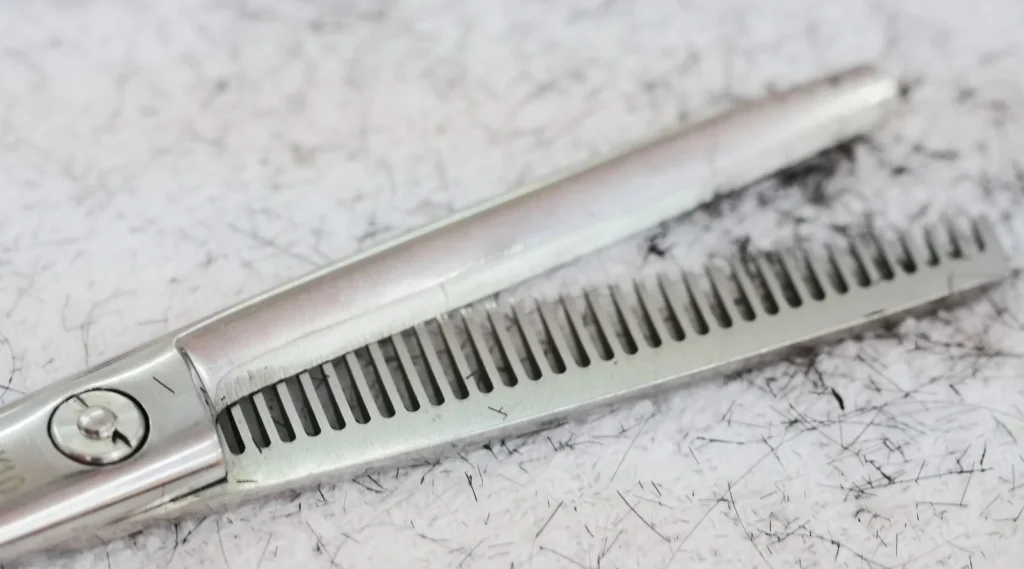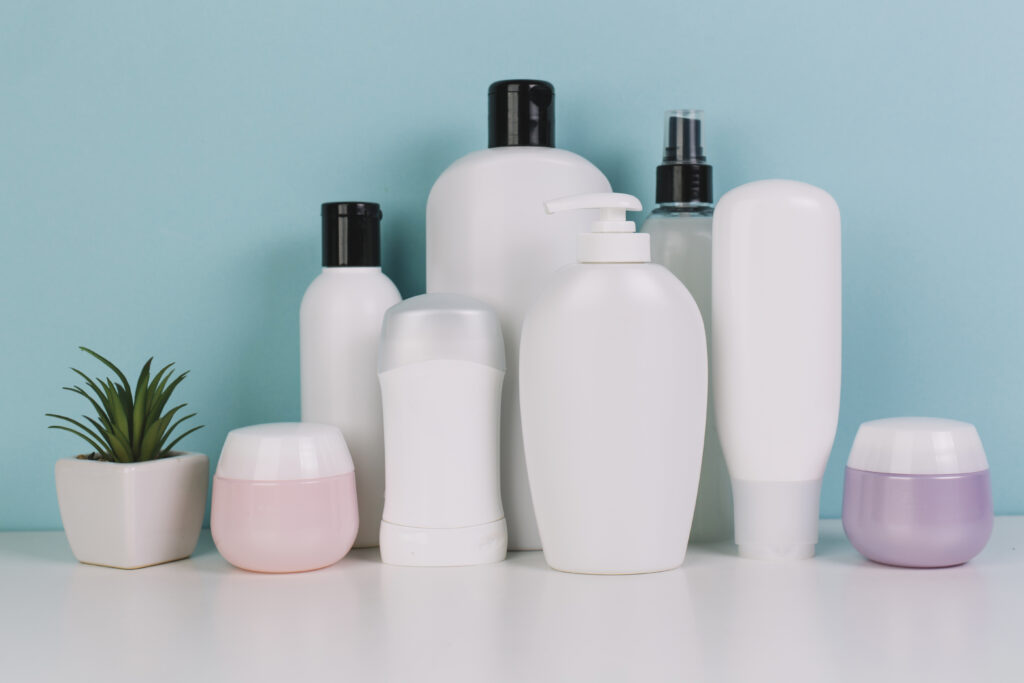Sanitizing hair cutting scissors is a crucial practice in maintaining a hygienic salon environment and ensuring the safety of both clients and stylists. Proper sanitation of these tools helps prevent the spread of infections, including bacterial, viral, and fungal diseases, which can easily be transmitted through contact with contaminated instruments. Regularly disinfecting scissors not only safeguards health but also enhances the overall client experience by demonstrating a commitment to cleanliness and professionalism. This essential practice not only protects the reputation of the salon but also complies with industry standards and regulations, thereby promoting a safer and more trustworthy environment for everyone involved.
This blog post will tell you how you can properly sanitize your hair cutting scissors between clients.
Sanitize Hair Cutting Scissors: Preparation
During a standard cut-and-style appointment, small strands of hair often stick to the blades and get lodged near the shear joint. To ensure that cleaning agents work effectively, these bits of hair must be removed before sanitizing hair cutting scissors. To do this, use a disposable towel and carefully wipe the blade, applying a small amount of pressure with your thumb and index finger. Make sure the scissors are facing away from you, and start wiping from the base of the blade, moving away from yourself. Next, dislodge any hairs from the joint. Once this is done, you can proceed with the cleaning and sanitizing process.
Sanitize Hair Cutting Scissors: Remove Styling Aid Residue
It’s also important to remove any styling products that might still be stuck to your tools. Styling aids like gels, mousses, sprays, and waxes can leave behind residues that cling to the blades, making them harder to clean. While most of these substances will be wiped away along with the hairs, some of the stickier materials can still adhere to the steel, leading to build-up over time. This residue not only affects the performance of the scissors but can also harbor bacteria, making proper cleaning essential.
To ensure thorough removal, you may need to use a cotton ball soaked in rubbing alcohol. Gently rub the cotton ball along the blades, paying special attention to areas where residues are more likely to accumulate. The alcohol helps break down the sticky substances, leaving your scissors clean and sanitized. However, this step shouldn’t be needed too often if you maintain a regular cleaning routine. By consistently removing styling aid residues, you can keep your tools in optimal condition, ensuring they perform well and last longer. Regular maintenance also contributes to a more hygienic salon environment, protecting both your clients and your professional reputation.
Sanitize Hair Cutting Scissors: Disinfect with Spray
The next step in properly sanitizing your haircutting scissors is to either spray or submerge scissors in a disinfection solution, such as Barbicide, depending on your state’s legal requirements. This step is crucial in ensuring the elimination of any lingering bacteria on the surface of the scissors, thereby reducing the risk of cross-contamination between clients.
You should apply a thin coat of the disinfectant on both sides of the blades. Ensure that the entire surface is covered, and then allow the solution to air dry completely. This method is effective and convenient, providing a quick way to sanitize your tools between uses.
In cases where submersion is required, immerse scissors in the Barbicide solution for no longer than ten minutes. Submerging for too long can potentially damage the steel, affecting the performance and longevity of your scissors. Make sure the solution reaches all parts of the scissors, especially around the pivot area where bacteria might accumulate.
Regardless of the method used, it is important to follow up by rinsing the scissors with clean water and drying them thoroughly. This final step ensures that no disinfectant residue remains, which could cause skin irritation or damage to the hair. These sanitation practices not only comply with health regulations but also uphold a high standard of hygiene and professionalism in your salon, ensuring a safe and pleasant experience for your clients.
Sanitize Hair Cutting Scissors: Maintenance and Storage
Once your scissors are sterilized, it’s essential to follow a few additional steps to maintain their quality and functionality. Start by rinsing the disinfectant solution off the scissors with tap water. This step ensures that no residual chemicals remain, which could potentially irritate skin or damage hair.
Next, apply a few drops of oil along the hinges of the scissors. This step is crucial for keeping the scissors in optimal working condition. The oil prevents rust, keeps the blades perfectly loose, and ensures smooth operation. When oiling your scissors, use only a small amount of a specialized product designed for hair cutting tools. Be sure to wipe off any excess oil before storing the scissors, as too much oil can transfer to a client’s hair during an appointment, potentially causing unwanted greasiness.
Finally, place your scissors in your tool bag for safe storage. Proper storage is key to protecting your scissors from damage and ensuring they remain sharp and effective. A designated tool bag or case keeps them secure, preventing accidental drops or nicks that could dull the blades.
By rinsing, oiling, and properly storing your scissors, you not only extend the life of your tools but also ensure a consistent, high-quality performance. These practices contribute to a more professional and hygienic salon environment, enhancing the overall client experience and maintaining your reputation as a meticulous and caring stylist.



